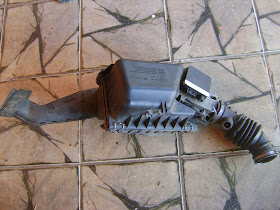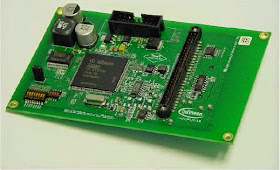ATUALIZAÇÃO 16/03
Video mostrando a retirada do motor e da caixa
Vamos começar a retirada do motor do Vectra.
No princípio apenas alguns conectores para se verificar o nível de dificuldade e as ferramentas que serão necessárias.
Este manual de reparação do Vectra pode ajudar muito esta tarefa.
Haynes Opel Vectra B 1995-1999 Repair and Manual-2.pdf
Vamos lá:
Parece que o melhor é retirar o motor por baixo, retirando o sub-frame inteiro. O Vectra deve estar com a frente bem levantada para que o sub-frame saia pela frente e por baixo.
Estes passos eu peguei no forum do Calibra:
If you have the space, the out the bottom is by far the easiest. Taking the inlet manifold off helps reduce the clearance needed by a few inches.
Disconnect everything from the engine and gearbox form the top, connectors, hoses, pipes, etc.
Undo the driveshaft nuts. Split the bottom ball joints. Exhaust front pipe off.
Unbolt the subframe. Support the engine, unbolt the engine mounts.
Lower it all down as one piece.
You may want to renew, lower arms, track rod ends and arg bushes while it's all apart and easy to get to.
Disconnect everything from the engine and gearbox form the top, connectors, hoses, pipes, etc.
Undo the driveshaft nuts. Split the bottom ball joints. Exhaust front pipe off.
Unbolt the subframe. Support the engine, unbolt the engine mounts.
Lower it all down as one piece.
You may want to renew, lower arms, track rod ends and arg bushes while it's all apart and easy to get to.
I've assisted a mate with the same job on a Vectra B twice (2.5 to 2.5 and 2.5 to 3.2)
Easiest way is definitely dropping engine plus subframe together through bottom, the first time we tried to lift and drop engine from top we had nothing but trouble.
Take photos before disconnecting cables, pipes, hydraulics, sensors etc so you know how it goes back together.
On Vectra B you just needed to undo top suspension mount, remove brake calipers, disconnect steering (on Calibra think it'd just be track rod ends as the steering rack on Vectra completely different i.e. not on bulkhead), unbolt exhaust at downpipe and then just pipes/cables etc finished by undoing the subframe / chassis bolts.
We used an engine crane both times, letting subframe sit on the crane legs made it easier to wheel around then work on swapping block/engine safely.
Obviously drain oil and coolant.
Any screws, washers, nuts etc you remove put into labelled pots / tubs to help with reassembly.
Remove all the quick parts like inlet manifold, battery etc as it just helps you access all the bit you're going to need to reach.
When dropping engine definitely do it slowly with an 'assistant' constantly checking all around as chances are you'll forget to disconnect or undo something (we forgot the alternator to battery wiring plus starter motor).
As mentioned already renew any other serviceable items and parts on the front suspension.
Worthwhile giving the engine bay a quick clean and rust treatment / repair whilst it's empty, my mate didn't want to do this for some reason!
Easiest way is definitely dropping engine plus subframe together through bottom, the first time we tried to lift and drop engine from top we had nothing but trouble.
Take photos before disconnecting cables, pipes, hydraulics, sensors etc so you know how it goes back together.
On Vectra B you just needed to undo top suspension mount, remove brake calipers, disconnect steering (on Calibra think it'd just be track rod ends as the steering rack on Vectra completely different i.e. not on bulkhead), unbolt exhaust at downpipe and then just pipes/cables etc finished by undoing the subframe / chassis bolts.
We used an engine crane both times, letting subframe sit on the crane legs made it easier to wheel around then work on swapping block/engine safely.
Obviously drain oil and coolant.
Any screws, washers, nuts etc you remove put into labelled pots / tubs to help with reassembly.
Remove all the quick parts like inlet manifold, battery etc as it just helps you access all the bit you're going to need to reach.
When dropping engine definitely do it slowly with an 'assistant' constantly checking all around as chances are you'll forget to disconnect or undo something (we forgot the alternator to battery wiring plus starter motor).
As mentioned already renew any other serviceable items and parts on the front suspension.
Worthwhile giving the engine bay a quick clean and rust treatment / repair whilst it's empty, my mate didn't want to do this for some reason!
Sub frame
Cano de descarga
Detalhe de um ponto de fixação do sub frame
Detalhe do protetor de carter rasgado
Dificuldade para desaparafusar este ponto. Chave canhão de 13mm
Sonda Lambda
Detalhe de um ponto de fixação do cano
Detalhe homocinética
Cano no chão
Sem o coletor do escapamento
Abriu mais espaço para desaparafusar outras coisas
Lateral sem o parachoque
Boa visão








































